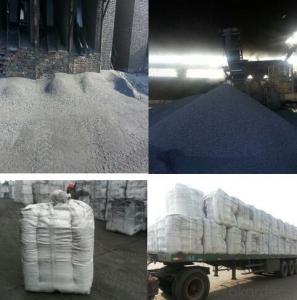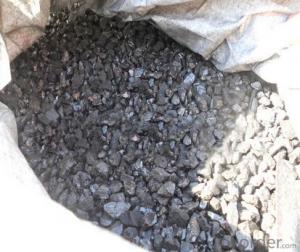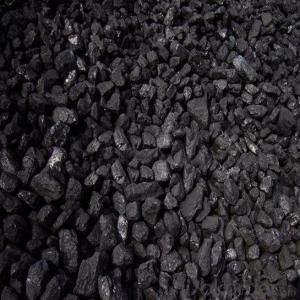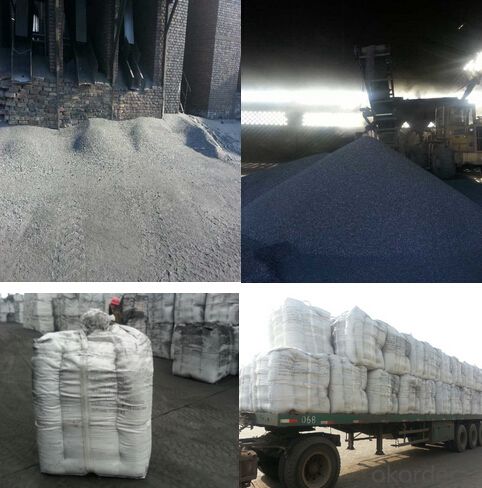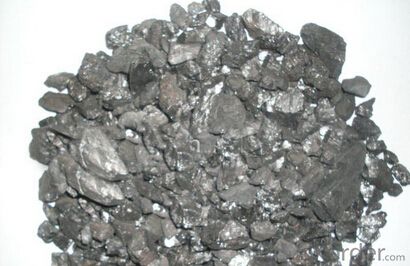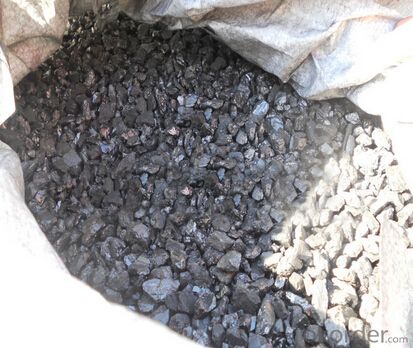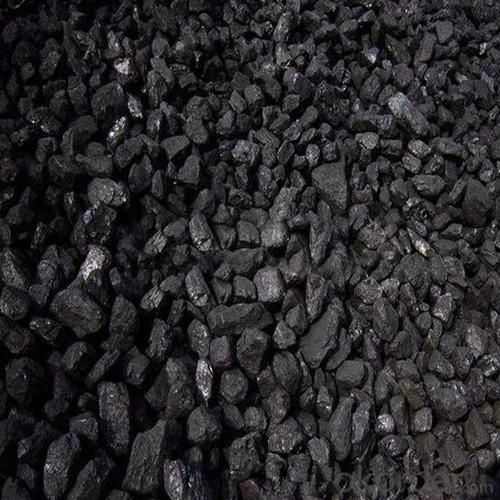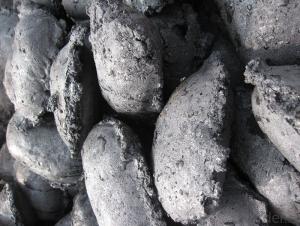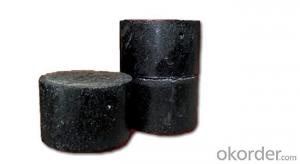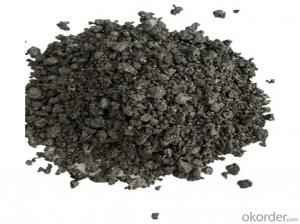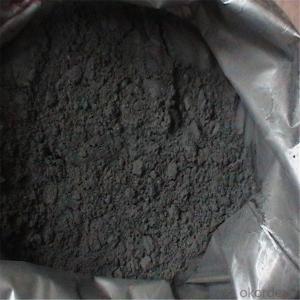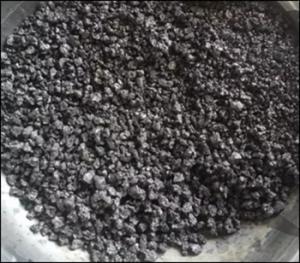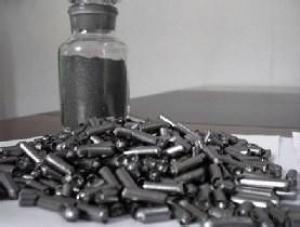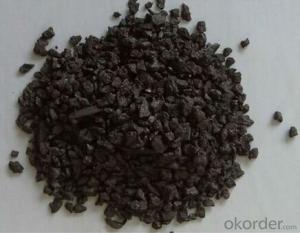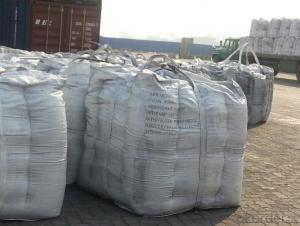Recarburant carbon graphite powder calcined petcoke petroleum coke
- Loading Port:
- Dalian
- Payment Terms:
- TT OR LC
- Min Order Qty:
- 10 m.t
- Supply Capability:
- 500000 m.t/month
OKorder Service Pledge
Quality Product, Order Online Tracking, Timely Delivery
OKorder Financial Service
Credit Rating, Credit Services, Credit Purchasing
You Might Also Like
Specifications of Recarburizer for Steelmaking:
As an ideal carbon additive and intermediate reactor
it has been widely used in different indust
Recarburizer for steelmaking
- F.C.: 90%min
ASH: 8%max
V.M.: 2%max
S: 0.5%max
MOI: 1%max
- F.C.: 93%min
ASH: 6%max
V.M.: 1%max
S: 0.5%max
MOI: 1%max
- F.C.: 95%min
ASH: 4%max
V.M.: 1%max
S: 0.5%max
MOI: 1%max
We also can supply the size is as customers' requirements.
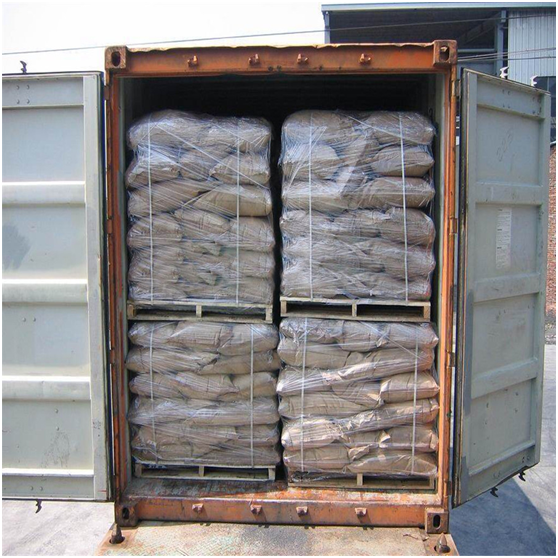
- Q: What is carbon neutral shipping?
- The concept of carbon neutral shipping involves offsetting or balancing the carbon emissions produced during the transportation of goods by sea, air, or land. Its goal is to minimize the environmental and climate impact of shipping. Shipping contributes to greenhouse gas emissions by burning fossil fuels, primarily heavy fuel oil in ships' engines. This releases carbon dioxide (CO2), nitrogen oxides (NOx), sulfur oxides (SOx), and particulate matter into the atmosphere, contributing to global warming and air pollution. To achieve carbon neutrality in shipping, different strategies can be used. One common approach is carbon offsetting, which involves investing in projects that remove or reduce an equivalent amount of CO2 from the atmosphere. This can include reforestation, renewable energy projects, or methane capture initiatives. By supporting these projects, shipping emissions are balanced out, resulting in a net-zero carbon footprint. Another way to achieve carbon neutrality is by using alternative fuels and energy-efficient technologies. Biofuels, hydrogen, and electric propulsion systems can significantly reduce or eliminate carbon emissions from ships. Optimizing shipping routes and vessel design can also reduce fuel consumption and emissions. Collaboration between shipping companies, governments, and international organizations is crucial to promote carbon neutral shipping. This includes setting industry-wide emission reduction targets, implementing stricter regulations, and providing incentives for sustainable practices. While carbon neutral shipping is a positive step towards addressing climate change, it should be seen as a transitional measure towards a fully decarbonized shipping sector. Continued research and development in clean technologies, along with the adoption of sustainable practices, are essential for long-term environmental sustainability in the shipping industry.
- Q: What are the benefits of carbon fiber?
- Carbon fiber "an hand in a velvet glove lighter than aluminum," the quality, but the strength is higher than that of steel, and has the characteristics of corrosion resistance, high modulus, in the national defense and civilian areas are important materials. It has not only the intrinsic characteristics of carbon materials, but also the softness and processability of textile fibers. It is a new generation of reinforced fiber.
- Q: What is the role of carbon in the formation of coal, oil, and natural gas?
- The formation of coal, oil, and natural gas relies heavily on carbon. Carbon is a crucial component of these fossil fuels, along with varying amounts of hydrogen, sulfur, nitrogen, and other elements. To begin the formation process, organic matter, such as dead plants and marine organisms, accumulates in oxygen-limited environments. Over a span of millions of years, the organic matter undergoes intense heat and pressure, resulting in a process called carbonization. During carbonization, the carbon within the organic matter undergoes chemical transformations, converting it into solid, liquid, or gaseous hydrocarbon compounds. The specific conditions under which carbonization takes place determine the specific type of fossil fuel that will be produced. In the case of coal, the organic matter primarily consists of land-based plant material. Through high pressure and temperature, carbonization converts this plant material into solid coal. The duration and intensity of the carbonization process determine the carbon content of the resulting coal. Different types of coal, such as lignite, bituminous, and anthracite, exhibit varying carbon content and energy density. Conversely, oil is formed from marine organisms like plankton and algae. As these organisms die, they descend to the ocean or lake floor and gradually become buried beneath layers of sediment. Over time, the heat and pressure cause carbonization, transforming the organic matter into a liquid hydrocarbon mixture known as crude oil. This crude oil can subsequently undergo further processing to yield various petroleum products. Natural gas, on the other hand, consists primarily of methane (CH4) and forms under similar conditions as oil. However, the carbonization process occurs at higher temperatures and pressures, leading the organic matter to decompose into gaseous hydrocarbon compounds. Natural gas can be found alongside oil deposits or trapped within underground rock formations, such as shale or sandstone. In summary, carbon serves as the essential foundation for the formation of coal, oil, and natural gas. Its presence within organic matter, combined with optimal conditions of heat, pressure, and time, culminates in the creation of these valuable energy resources that significantly contribute to powering our modern world.
- Q: Often see the so-called 30T, 46T, 60T carbon fiber, 60T carbon fiber, equivalent to T hundreds of carbon fibers, is T800, or T1000? I'm not very good at parameter conversion. Is there a parameter list? How do I correspond to the T300T700T800 performance parameter table?
- One, 60T carbon fiber and T hundreds of carbon fiber does not have any corresponding, 60T belongs to M series (high modulus carbon fiber). Only 30T corresponds to T800.
- Q: How are carbon nanotubes used in various applications?
- Carbon nanotubes are used in various applications due to their unique properties. They are used in electronics and semiconductors for their high conductivity, in energy storage devices for their high surface area and lightweight nature, and in medicine for drug delivery and imaging purposes. Additionally, carbon nanotubes find applications in materials science, aerospace engineering, and environmental remediation, among others, showcasing their versatility and potential impact across multiple fields.
- Q: What is latent carbon?
- Prochiral carbon atom (prochiral carbon atoms).A company has four completely different carbon atoms or groups of atoms is called chiral carbon atoms. When a carbon atom with two identical and two different atoms or groups of atoms such as Caabe, the carbon atom is called prochiral carbon atom (prochiral carbon) or prochiral center. If the two of the same atom or group of atoms (a, one of the many hydrogen atoms) is a different from a, B, e atom or group of atoms substituted by the D, get a new chiral carbon atoms such as methylene Cabed. ethanol and propionic acid molecules in the carbon atom is prochiral carbon atoms.
- Q: How does carbon affect the pH of rainwater?
- Carbon can affect the pH of rainwater through a process known as carbonic acid formation. When carbon dioxide (CO2) in the atmosphere dissolves in rainwater, it reacts with water molecules to form carbonic acid (H2CO3). This reaction lowers the pH of rainwater, making it more acidic. The carbonic acid dissociates into hydrogen ions (H+) and bicarbonate ions (HCO3-), which further contribute to the acidity of the rainwater. Therefore, increased levels of carbon dioxide in the atmosphere, such as those caused by human activities like burning fossil fuels, can lead to an increase in carbonic acid formation and subsequently lower the pH of rainwater, resulting in acid rain.
- Q: What are the different forms of carbon?
- There are multiple variations of carbon known as allotropes. Diamond, graphite, and amorphous carbon are the most common types. Diamond, the hardest natural substance, is made up of carbon atoms arranged in a crystal lattice structure. It is highly refractive and often used for its brilliance and clarity in jewelry. On the other hand, graphite has a layered structure where carbon atoms form sheets. It is a soft and slippery material commonly found in pencils and lubricants. Graphite is also an excellent conductor of electricity, making it suitable for batteries and electrodes. Amorphous carbon refers to carbon materials without a well-defined crystal structure. Examples include charcoal, soot, and activated carbon. These forms have diverse applications, such as water and air purification, as well as the manufacturing of electrodes and pigments. There are also other forms of carbon, like fullerenes and carbon nanotubes, which have unique properties and are extensively researched for potential applications in nanotechnology and electronics. To summarize, carbon can have various forms due to its atomic arrangement, resulting in materials with distinct physical and chemical properties. These forms of carbon are used across different industries and play a vital role in our daily lives.
- Q: How does carbon dioxide contribute to global warming?
- Carbon dioxide (CO2) contributes to global warming primarily through the greenhouse effect. This effect occurs when certain gases in the Earth's atmosphere trap heat from the sun, preventing it from escaping back into space. While the greenhouse effect is a natural process that helps maintain the Earth's temperature, human activities, such as the burning of fossil fuels, have significantly increased the concentration of CO2 in the atmosphere. When fossil fuels like coal, oil, and natural gas are burned for energy production, CO2 is released into the atmosphere as a byproduct. This excess CO2 acts as a heat-trapping gas, absorbing and re-emitting heat radiation that would otherwise escape into space. As a result, the Earth's temperature is increasing, leading to global warming. The increase in global temperatures has far-reaching consequences. It accelerates the melting of polar ice caps and glaciers, causing rising sea levels that threaten coastal areas and low-lying islands. It also disrupts weather patterns, leading to more frequent and severe heatwaves, droughts, and extreme weather events like hurricanes and floods. Moreover, global warming affects ecosystems, causing shifts in habitats, loss of biodiversity, and detrimental impacts on plant and animal species. The importance of reducing carbon dioxide emissions is crucial to mitigating global warming. This can be achieved through various means, including transitioning to renewable energy sources, improving energy efficiency, investing in sustainable transportation, and adopting practices that promote reforestation and carbon sequestration. By taking these actions, we can slow down the rate of global warming and mitigate its adverse effects on the planet and its inhabitants.
- Q: How does deforestation affect carbon levels?
- The atmosphere is significantly affected by deforestation, as it leads to higher carbon levels. Carbon dioxide (CO2) is absorbed by trees through photosynthesis and stored in their trunks, branches, leaves, and roots, playing a vital role in the carbon cycle. However, when forests are cleared or burned, the stored carbon is released back into the atmosphere as CO2, contributing to the greenhouse effect and climate change. Deforestation not only reduces the number of trees available to absorb CO2, but it also disrupts the natural balance of the carbon cycle. Forests function as carbon sinks, meaning they absorb more CO2 than they release, thus helping to regulate the Earth's climate. By cutting down forests, the carbon stored in their biomass is quickly released, worsening the issue of excess CO2 in the atmosphere. Moreover, deforestation affects the long-term carbon storage capacity of the planet. Young trees and newly regrown forests have lower carbon storage capabilities compared to older, mature forests. Consequently, clearing forests and replacing them with young vegetation or non-forested land significantly diminishes the ability to absorb and store carbon. The consequences of increased carbon levels in the atmosphere are extensive. Carbon dioxide acts as a greenhouse gas, trapping heat in the Earth's atmosphere and contributing to global warming and climate change. Rising temperatures result in a chain of effects, such as more frequent and intense extreme weather events, higher sea levels, and disruptions to ecosystems and biodiversity. To minimize the impact of deforestation on carbon levels, it is crucial to prioritize sustainable forest management practices and efforts for reforestation. Protecting existing forests and promoting afforestation and reforestation can help restore the planet's capacity to absorb carbon and contribute to global endeavors in combating climate change.
Send your message to us
Recarburant carbon graphite powder calcined petcoke petroleum coke
- Loading Port:
- Dalian
- Payment Terms:
- TT OR LC
- Min Order Qty:
- 10 m.t
- Supply Capability:
- 500000 m.t/month
OKorder Service Pledge
Quality Product, Order Online Tracking, Timely Delivery
OKorder Financial Service
Credit Rating, Credit Services, Credit Purchasing
Similar products
Hot products
Hot Searches
Related keywords
